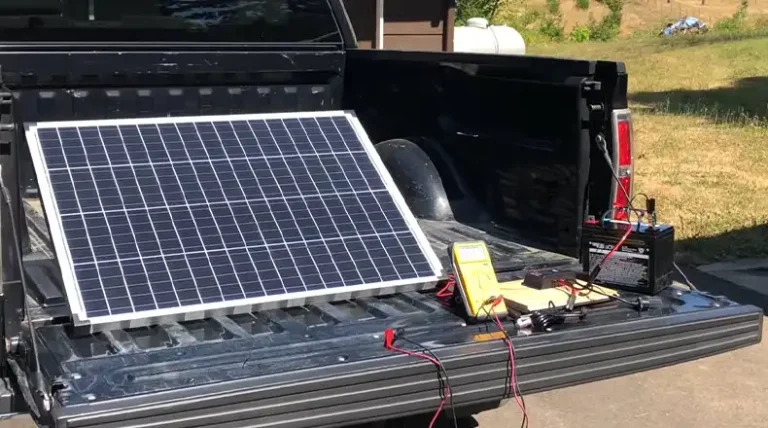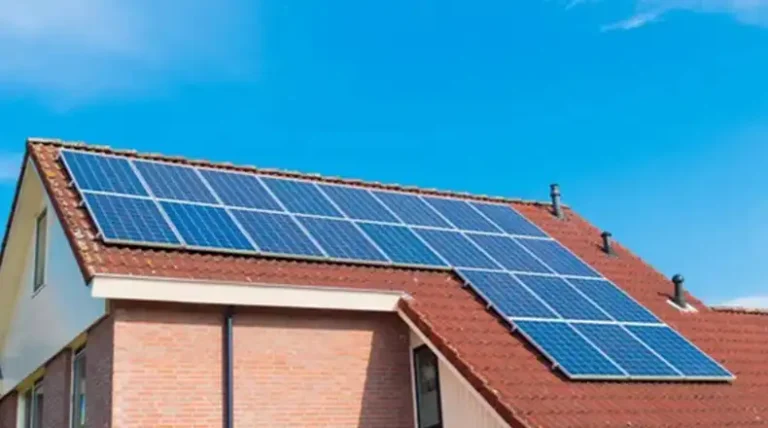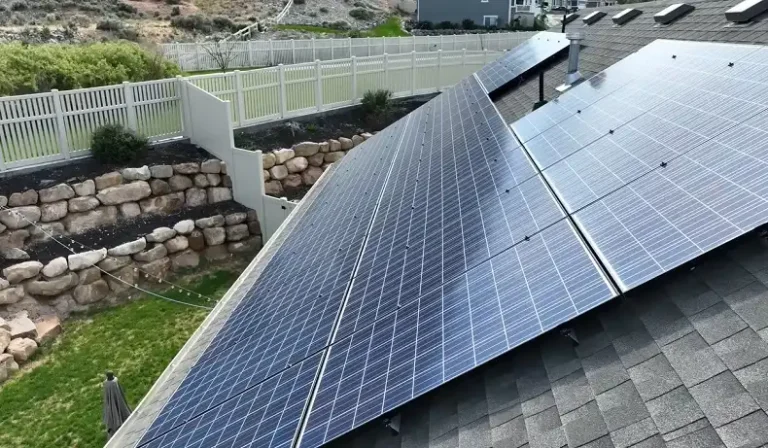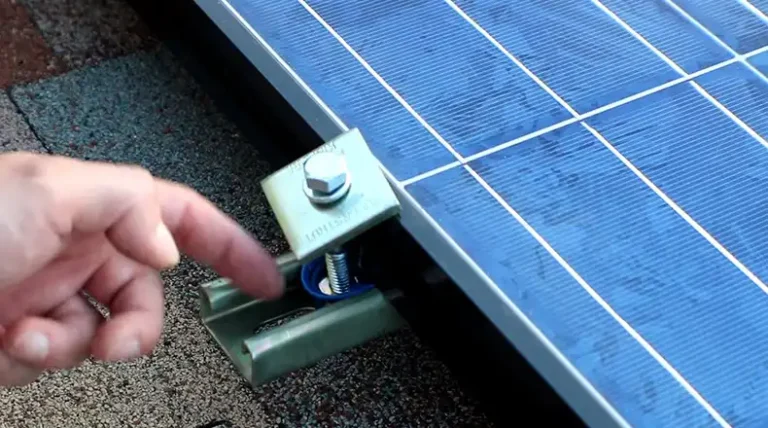Solar Panel Efficiency Ratings
Solar panel efficiency ratings indicate how effectively a solar panel converts sunlight into usable electricity. The efficiency is represented as a percentage, with higher numbers meaning a more efficient conversion of the sun’s energy. Most residential solar panels today range from 15% to 22% efficiency.
This article is all about solar panel efficiency ratings. It explores their significance, different types, factors that influence them, and methods used for calculation. It also provides insights on maximizing efficiency and identifying the most efficient solar panels currently available.

Importance of Solar Panel Efficiency Ratings
Solar panel efficiency ratings are crucial in a few yet effective ways.
Maximizing Energy Output: Higher efficiency ratings mean the solar panels can produce more electricity from the same surface area. This allows homeowners and businesses to maximize their energy output from a limited roof or ground space.
Cost Optimization: While higher efficiency panels cost more upfront, they can reduce overall system costs in the long run by requiring fewer panels to meet energy needs. Evaluating efficiency ratings is crucial for optimizing cost vs. power output.
Space Constraints: For homes or businesses with limited roof space or shaded areas, high-efficiency panels become very important to ensure sufficient energy can be produced from the available area.
Environmental Impact: More efficient solar panels create the same energy while using fewer raw materials and reducing the manufacturing footprint per watt produced.
Financial Returns: Higher efficiency translates to greater energy production over the system lifetime, increasing savings on utility bills, and improving financial returns on the solar investment.
Types of Solar Panel Efficiency
There are several types of solar panel efficiency, each determined by the materials and manufacturing processes used.
Monocrystalline silicon solar panels are typically the most efficient, with efficiency ratings ranging from 15% to 22%.
Polycrystalline silicon solar panels have slightly lower efficiency ratings, typically between 13% and 16%.
Thin-film solar panels, made from materials like cadmium telluride or amorphous silicon, have lower efficiency ratings between 7% and 18% but are more cost-effective.
Emerging technologies like perovskite solar cells and multi-junction solar cells are pushing the boundaries of solar panel efficiency, with some experimental models achieving efficiency ratings above 40%.
How Solar Panel Efficiency Rating is Determined?
The solar panel efficiency rating is determined by several factors, including the materials used in the panel, the manufacturing processes, and the design of the solar cells.
The efficiency rating is calculated by dividing the amount of electrical energy produced by the panel by the amount of solar energy that strikes the panel’s surface.
Factors such as temperature, shading, and angle of incidence can also affect a solar panel’s efficiency in real-world conditions.
How to Determine Solar Panel Efficiency Ratings?
Solar panel efficiency ratings are typically determined through standardized testing procedures conducted in laboratory settings. These tests involve exposing the solar panels to controlled levels of sunlight and measuring the electrical output. The efficiency rating is then calculated based on this formula –
Solar Panel Efficiency = (Maximum Power Output (Watts) / (Area of Panel (m²) * Light Intensity (W/m²))) x 100%
For easier understanding, take a closer look at the following example –
Suppose a solar panel has a maximum power output of 300 watts, a surface area of 1.6 square meters, and is tested under standard test conditions (STC) with a light intensity of 1000 watts per square meter. Its efficiency rating can be calculated as follows:
So, Solar Panel Efficiency = (300 W / (1.6 m² * 1000 W/m²)) x 100%
= (300 W / 1600 W) x 100%
= 0.1875 x 100%
= 18.75%
In this example, the solar panel has an efficiency rating of 18.75%, which means it converts 18.75% of the incoming solar energy into electrical energy under standard test conditions.
How to Maximize Solar Panel Efficiency?
While solar panel efficiency is primarily determined by the manufacturing process and materials used, there are several ways to maximize the efficiency of your solar panel installation.
Proper orientation and tilt angle towards the sun can significantly increase energy production. Keeping the panels clean and free from dust or debris is also essential.
Additionally, using a solar tracking system that adjusts the panel’s position throughout the day can boost efficiency by ensuring optimal exposure to sunlight.
Proper system design, including the selection of high-quality components and appropriate inverters, can also enhance overall system efficiency.
What are the Most Efficient Solar Panels?
When it comes to the most efficient solar panels on the market, several brands and models stand out. Here’s a table showcasing some of the top contenders, along with their efficiency ratings, average costs, and authentic model prices –
| Brand | Model | Efficiency Rating | Estimated Total Price Range (5kW System) |
| SunPower | Maxeon 3 | 22.8% | $10,000 – $15,000 |
| LG | NeON R | 21.8% | $7,500 – $10,500 |
| REC | Alpha Series | 21.7% | $7,000 – $9,000 |
| Panasonic | HIT N330 | 20.3% | $6,750 – $9,750 |
| Solaria | PowerXT 350R-PD | 20.1% | $7,250 – $10,250 |
It’s important to note that these efficiency ratings are based on laboratory testing conditions, and actual performance may vary depending on factors such as temperature, shading, and system design. The model prices may vary based on location, supplier, and market conditions.
Conclusion
In conclusion, solar panel efficiency ratings are a crucial factor in determining the overall performance and cost-effectiveness of a solar energy system. By understanding the importance of efficiency ratings, the types of solar panel efficiency, the determining factors, and ways to maximize efficiency, you can make informed decisions when investing in solar panels. If you have any further questions or need clarification on solar panel efficiency ratings, feel free to leave a comment below.
People Also Ask
1. Can solar panel efficiency be improved over time?
Yes, solar panel efficiency can potentially improve over time through technological advancements and new materials. Manufacturers are constantly working on developing more efficient solar cells and panels to increase energy production and reduce costs.
2. How does temperature affect solar panel efficiency?
Temperature can have a significant impact on solar panel efficiency. Higher temperatures generally reduce the efficiency of solar panels, as the increased heat can cause the semiconductor materials to operate less effectively. Proper cooling and ventilation can help mitigate this effect.
3. Is it better to have fewer high-efficiency solar panels or more lower-efficiency panels?
The choice between fewer high-efficiency solar panels or more lower-efficiency panels depends on several factors, including available space, budget, and energy requirements. High-efficiency panels may be more expensive upfront but can produce more energy in a smaller area, while lower-efficiency panels may be more cost-effective if you have ample space available.






